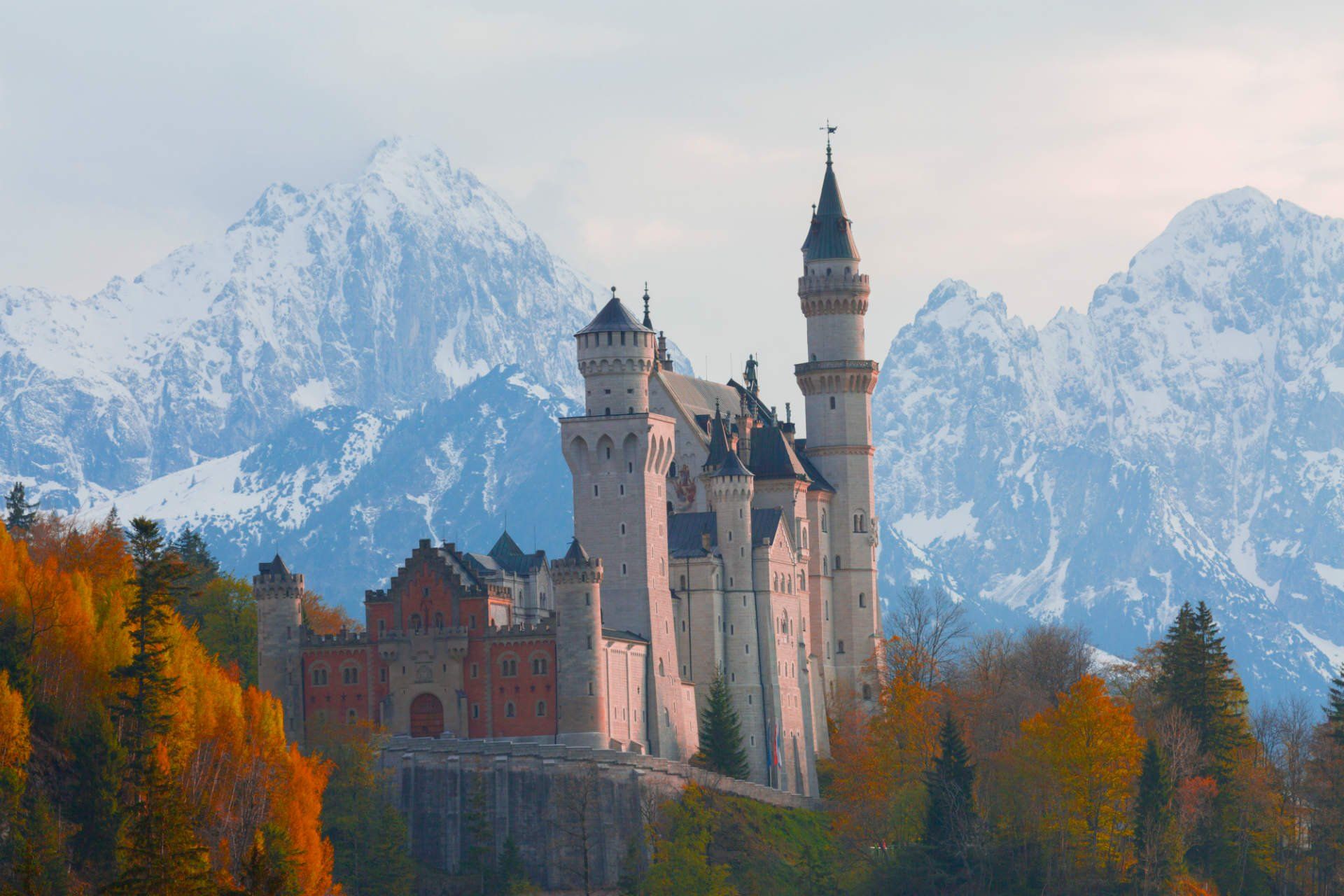Travel advice for Germany
From travel safety to visa requirements, discover the best tips for visiting Germany
Plan and book your private, tailor-made tour with vetted local experts
October is peaceful, vibrant, and filled with fall traditions, perfect for travelers looking for seasonal charm with fewer crowds. Particularly picturesque are the forested areas like the Black Forest or Saxon Switzerland, which are ablaze with the hues of fall. The weather in Germany in October becomes chilly and more unpredictable. Rainfall picks up throughout much of the country, and fog is widespread in valleys and around rivers. It gets cold in the evenings, so taking a warm coat is crucial. Although many outdoor attractions start to close for the season, museums and cultural sites are still in full swing.
Golden leaves and misty mornings define the environment throughout Germany in October. This month is a favorite for scenic road trips, harvest festivals, and the closing weeks of Munich’s Oktoberfest.
Visiting Germany in fall is all about taking in nature’s changing colors and experiencing the rich local culture at a more leisurely, reflective pace. Many consider this season the best time to visit Germany if you’re after fewer crowds, cooler weather, and a more laid-back atmosphere. Compared to summer, the fall weather in Germany in October is much cooler, but the crisp air and golden foliage bring a touch of seasonal warmth.
The fall shades reach their peak in October, especially in areas like the Black Forest and along the Romantic Road. If your Germany itinerary includes outdoor adventures and regional traditions, this is the perfect month for appreciating the landscape with activities like hiking in the Bavarian Forest, taking in a scenic drive through Saxony, or attending regional food festivals. The famous Oktoberfest comes to an end during the first week, but several towns continue to host local harvest celebrations.
Fewer tourists travel in October, especially after the first week, which makes the nation’s cities feel cozier. Generally, reduced visitor numbers at indoor attractions mean no waiting in line, and accommodations and tours do not need to be booked in advance. Costs for flights and lodgings are reasonable, except during regional events or school vacations.

Goeltzschtalbruecke bridge in Saxony, Germany © Sebastian Rose
The average temperatures across Germany in October cool significantly, and morning fog and light frost may appear in higher areas.
Regional differences occur in temperatures. For instance, the average high temperature in Berlin is around 55°F (13°C), while nighttime lows drop to around 43°F (6°C). In southern cities like Munich and Nuremberg, highs are typically a bit warmer at about 58°F (14°C), with overnight lows around 44°F (7°C).
High temperatures in northern Germany are roughly around 55°F (13°C), while nighttime lows tend to be lower than in other parts of the country, averaging 41°F (5°C). The breeze can make days feel cooler, particularly along the coast. Central and western parts of the country, including Cologne and the Rhine region, typically see highs of around 61°F (16°C) and nighttime lows of about 47°F (8°C).
Crowds noticeably decline in October, especially after Oktoberfest finishes early in the month. This makes sightseeing more relaxed and allows easier access to well-known tourist spots without being hampered by too many people. If you're planning a trip to Germany in the fall, this quieter period offers flexibility; lower tourist numbers mean you can book accommodations wherever and whenever without having to plan far ahead.
Value-conscious travelers to Germany will be happy to know that visiting during this shoulder season comes with cost-saving perks. Although not the cheapest time to go, rates for accommodations, excursions, and transport are significantly lower than in the summer, especially in mid- and late October.

Neuschwanstein Castle, Germany @ Shutterstock
October's vibrant fall colors make it a terrific month for photography. Touring the countryside and visiting vineyards are excellent ways to appreciate Germany's natural beauty at this time of year. Some of the best places to visit in Germany during October include wine regions like the Moselle Valley, the Black Forest, and the scenic routes along the Romantic Road, where fall truly puts on a show.
In October, the Bavarian Forest National Park is a riot of red and gold. Trails that wind through lush forests, across moors, and beside rivers provide tranquil escapes and the opportunity to take wonderful photos.
Germany’s central region is home to numerous fairytale castles, such as Schloss Wartburg and Schloss Friedenstein, which are dramatically framed by beautiful fall foliage in October.
Delightful towns with timber frame buildings and vineyards encircle the Moselle River, where indulging in local seasonal cuisine is a favorite pastime. The fresh, bright weather in Germany in October is perfect for exploring the area by bike.

Aachen Cathedral in Germany © Shutterstock
This UNESCO World Heritage town of Quedlinburg boasts over 1,300 half-timbered houses; its peaceful squares and cobbled streets make you feel as though you've entered a fairy tale.
Touring the rural roads of Saxony, which stretch from the Elbe Valley to the Ore Mountains, uncovers breathtaking vistas and charming villages surrounded by dazzling fall scenery.
The events that take place throughout October celebrate the best of fall in Germany, from harvest festivals and local traditions to international cinema.
From travel safety to visa requirements, discover the best tips for visiting Germany
Discover Germany's most captivating stories
written by
Olga Sitnitsa
updated 20.05.2025
Online editor at Rough Guides, specialising in travel content. Passionate about creating compelling stories and inspiring others to explore the world.
Arrange your trip, hassle-free, with local travel experts
Arrange your trip with local travel experts